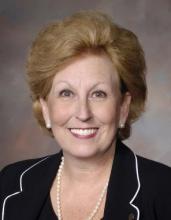As the state and federal health insurance exchanges get up and running, physicians will face questions from patients about eligibility, enrollment, and how the marketplaces work.
The dizzying array of plans, costs, subsidies, and more could easily overwhelm even those who have been closely following the implementation of the Affordable Care Act, which established the exchanges.
Physicians don’t have to go it alone. Several organizations – including the American Medical Association, the American College of Physicians, and the American Academy of Family Physicians – have set up websites to help doctors help their patients through the open enrollment period (Oct. 1, 2013, to March 31, 2014).
"We’re going to give facts, figures, and information to doctors so they have it in their offices, to help them and their staff navigate this period of time," Dr. Ardis Dee Hoven, AMA president, said in an interview.
Dr. Reid Blackwelder, president of the AAFP, agreed that physicians did not have to be the only ones helping patients. Family physicians, in particular, "often feel we’re supposed to have the answer for everything, and that’s not really possible," he said in an interview.
Knowing about the exchanges, whether one agrees with the premise of the ACA or not, is important to patient care, Dr. Blackwelder said. "Even if physicians are not happy with [the law], they need to help patients recognize this is an option available to them to help them with their health care costs."
Dr. Charles Cutler, chairman of the ACP Board of Regents, said, "personally, this is a conversation I want to have with the patient." He said that a physician is most knowledgeable about that patient’s medical needs and can help guide what kind of coverage to choose.
There will be much to navigate. To a large extent, what doctors tell patients about the exchanges will depend on where they practice.
Each state has chosen its own pathway for an exchange as well as whether it will expand Medicaid eligibility, which impacts how, and how many, patients will receive coverage.
Under the ACA, Medicaid coverage is available to all Americans who earn up to 133% of the federal poverty level ($14,856 for an individual and $30,657 for a family of four). Twenty-four states have said they will make Medicaid available at that level or higher, 21 won’t expand, and 5 are uncommitted.
That means a lot of people will make too little to buy coverage on an exchange and too much to get Medicaid. According to a recent study by the Commonwealth Fund, in states that aren’t expanding, about 42% of adults who were uninsured for any time over the past 2 years won’t have access to new coverage.
At press time, 16 states and the District of Columbia had created their own exchanges, 26 states were letting the federal government run the exchange, and 7 states were operating partnership with the feds. In Utah, the state has opened an exchange for small businesses, but the federal government runs the exchange for individuals.
There are a lot of questions about how many patients will enroll through exchanges and how diligently they will stick with the new insurance plans.
*In the first week the exchanges were open, some 8 million people visited the federal exchanges' healthcare.gov website. The Department of Health and Human Services (HHS) was not able to say how many of them had actually applied for insurance coverage. The number of hits and applications on the state exchange sites varied, but in most states, the initial amount of traffic was massive.
Families USA has estimated that as many as 26 million Americans who make between 100% and 400% of the federal poverty level (between $24,000 and $94,000 for a family of four) will be eligible for tax credits to buy insurance.
Although individuals will be required to have health insurance beginning in January, some will choose not to. Those who opt out in 2014 will pay a penalty to the federal government with their 2015 tax return. The penalty will be either 1% of their income or $95, whichever is higher. By 2016, that amount rises to 2.5% of income or $695 per person, with exceptions for low-income individuals.
The government is also cutting enrollees a break on premium payments. As long as they have paid at least one premium, they’ll have a 90-day grace period to pay the next one. If they don’t pay, the insurer can drop the patient from the plan. But, if they’ve received services during that 90-day period, the insurer is not obligated to pay. That doesn't sit well with many physicians.



